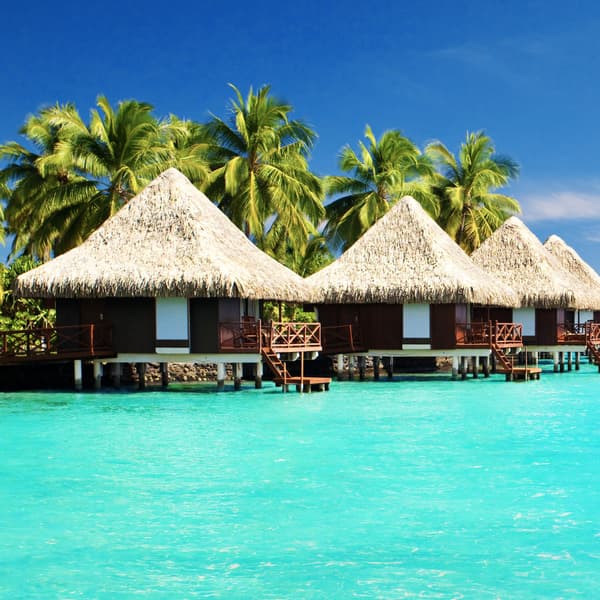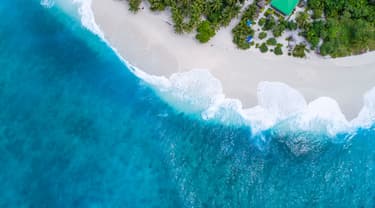Updated March 21, 2023
Published April 2, 2020
Make the most of the joys of spring – longer days, warmer temperatures, blossoms going into overdrive – a when you go on holiday in April. Whether you’re looking for a city break, a beach holiday or an adventure, have a look at some of these ideas.
1. Rome, Italy

Rome’s intoxicating mix of culture, history, fabulous food and sheer style is hard to resist at any time of year, but spring brings a certain sweetness to the air.
Make the most of it in one of Rome’s beautiful green spaces – walk the shaded footpaths winding through the Villa Borghese gardens and get sweeping views of the city from the park’s Terrazza del Pincio, or head across the river to the Janiculum Terrace in Trastevere. Villa Pamphili Park is just to the west of Janiculum, a sprawling area of landscaped gardens, palaces and a pretty lake.
The city’s greatest hits are worth booking in advance, so don’t miss out the chance to explore the Colosseum, the Forum and the Vatican Museums. The Pantheon – free to visit – is one of the Western world’s greatest creations and not to be missed. For a true taste of Rome, head to the Testaccio food market, where street food stalls join sellers of gorgeous local produce.
2. Marrakech, Morocco

Manic yet utterly magical, Marrakech draws you into its colourful world and invites you to get pleasantly lost in the Medina’s maze of souks. Every now and again, you’ll come across inviting cafés with rooftop terraces, where you can refresh with glasses of mint tea and city views.
Your wanders will inevitably take you to the city’s most famous square, Jemaa el-Fnaa, which transforms itself from a busy marketplace during the day to a perpetual party at night. That’s when food stalls with long tables set up in the square, joined by street performers, musicians and storytellers.
Head beyond the pink-tinged walls of the Medina to the French-style Ville Nouvelle, where you can wander round the exotic Jardin Majorelle, the garden that belonged to Yves Saint Laurent. While you’re there, pop into the Yves Saint Laurent Museum which is just seconds away.
3. Costa Dorada, Spain

Spain’s aptly named Costa Dorada (Golden Coast) meanders along for about 135 miles south of Barcelona, squeezing in long stretches of sandy beaches as well as secluded coves.
One of the major resorts is Salou, with its Blue Flag beach and the enormous PortAventura, the largest theme park in Spain (opens March 31). For something a little quieter, check out the smaller neighbouring resort of La Pineda. You’ll find more Blue Flag beaches in the fishing village of Cambrils, as well as a dizzying choice of superior seafood restaurants.
History fans can go back to Roman times in Tarragona with a wander round the ancient Roman theatre and forum. And one of the prettiest towns along the Costa Dorada is Sitges, which hums with activity all year round but joins in the Easter celebrations with great gusto.
4. Majorca, Balearic Islands, Spain

The largest of the Balearic Islands has one of the most beautiful coastlines in the Mediterranean. Look beyond the party resort of Magaluf and explore the nooks and crannies of Majorca’s heavily indented coast. In the north, you’ll find the soft sands of Cala Mesquida, Muro Beach and the many coves and beaches around Puerto Pollensa, just to whet the appetite.
On the east coast, check out the yachts in the marinas around Cala d’Or before exploring the nature reserve at Mondrago Natural Park. The island’s capital, Palma, has become a favourite place for a sunny city break, thanks to its warren-like old town and magnificent Gothic cathedral.
5. Madeira, Portugal

April is a wonderful time to visit Madeira, especially if you’re after a good-value holiday. The island’s capital, Funchal, is an exciting place to start your trip – you’ll enjoy sweeping panoramas from the city’s cable car and can hurtle down the hilly Monte neighbourhood on an urban toboggan manned by a team of straw-hatted carreiros. Then, toast your bravery with a taste of Madeira’s delicious fortified wines. You’ll find plenty of bars in the old town selling the stuff.
For other unforgettable adventures, leave Funchal and take on Madeira’s great outdoors. Here you’ll get the double whammy of a lush, forest-filled interior and chilly Atlantic waters that are home to dolphins and whales. Lace up your hiking boots to follow an intricate network canals-turned-trails known as levadas or take to the water on a wildlife-spotting tour. Bryde’s and sperm whales, as well as bottlenose dolphins, are common this time of year.
6. Antigua

Direct flights make this appealing Caribbean island easy to visit. Antigua is blessed with some of the best beaches in the Caribbean – one for each day of the year, as the island’s saying goes. Its dimpled coastline harbours beaches of soft sands, some blinding white, others pink or golden. Head to the eastern side of the island to Half Moon Bay, whose white sands are protected from the Atlantic by a long reef.
If you like snorkelling, bring your gear to Galleon Beach on the southern side of the island. From here, it’s a short uphill walk to Shirley Heights, where you can join the sunset parties that take place on Sundays. The beach is also handy for visits to Nelson’s Dockyard, which is the only working Georgian dockyard in the world.
7. Porto, Portugal

Portugal’s second city is a beauty, with colourful buildings, azulejo-adorned facades and cobbled medieval streets that are ideal for urban exploring. Dating back to the 1st century BC, Porto’s UNESCO-listed cobbled streets and squares invite lazy ambles past café terraces. You can’t miss the sight of its mighty 19th-century Dom Luis I Bridge, which spans the Douro River. Climb to the top for panoramic views of the city and cross the bridge to Vila Nova de Gaia.
You’ll enjoy more city views from this bank of the Douro, where traditional rabelo boats laden with port casks bob in the water. In fact, the whole area is crammed with the stuff – world-renowned port houses line the waterfront here, and you can go behind the scenes on a tour of big-name cellars such as Ferreira and Taylor’s. Tastings are included, of course.
Afterwards, explore beyond the city on a boat cruise along the Douro. It doesn’t take long for the densely packed buildings to give way to neat, terraced hills and whitewashed quintas, where Porto’s famed export is produced. Cruises run to either Régua or Pinhão and include wine tastings in the price. You’ll return to the city by train.
Have a comment or question about this article? You can contact us on Twitter or Facebook.

